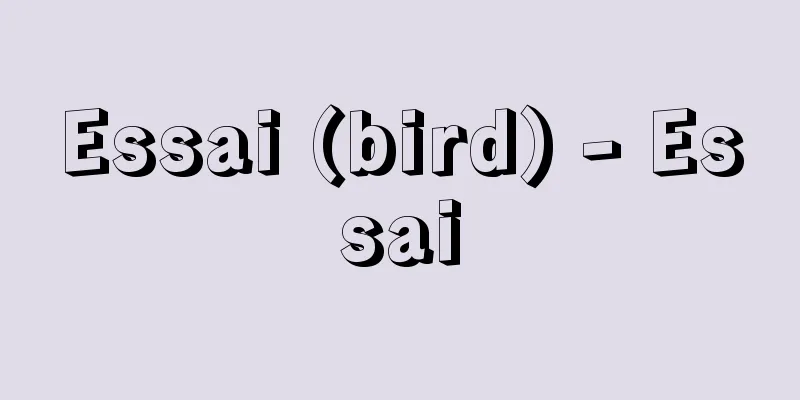Lobotomy

|
A surgical procedure to separate the neural circuits of a lobe from the rest of the brain. It is also called frontal lobe leukotomy. It was once performed as a radical treatment for severely ill patients with schizophrenia, bipolar disorder, and other mental disorders. In 1935, Portuguese neurologist Antonio Egas Moniz performed a procedure in which high-purity ethyl alcohol was injected into the prefrontal cortex to block neural circuits believed to cause repetitive thought patterns in psychiatric patients. Moniz later developed a specialized instrument to cut the white matter in the brain, physically separating bundles of nerve fibers connecting the prefrontal cortex and the thalamus. Although the results of the procedure were inconsistent, it became widespread because there were few other treatments available at the time to suppress symptoms such as agitation, delusions, self-destructive behavior, and violence. In 1936, American neurologists Walter Freeman and James Watts improved the procedure, and in the 1940s, they developed a procedure that could be performed in a short time and performed it on many patients. Most patients who underwent lobotomy experienced relief from symptoms such as tension and agitation, but many also experienced lethargy, passivity, lack of motivation, difficulty concentrating, and a general decrease in emotional responsiveness. However, these side effects were not widely reported in the 1940s, and the long-term effects were largely unknown. Moniz was awarded the Nobel Prize in Physiology or Medicine in 1949 in recognition of the widespread success of lobotomy. In the mid-1950s, as effective drugs became available to treat and alleviate the symptoms of mental illness, lobotomy fell into disuse. Source: Encyclopaedia Britannica Concise Encyclopedia About Encyclopaedia Britannica Concise Encyclopedia Information |
|
脳葉(→大脳)の神経回路を脳のほかの部分から切り離す外科手術。前頭葉白質切断術ともいう。かつては,統合失調症,双極性障害(→うつ病),その他の精神疾患をもつ重篤患者に対する抜本的な治療法として実施された。1935年ポルトガルの神経科医アントニオ・エガス・モニスは,精神病患者に反復的な思考パターンを引き起こすと思われる神経回路を遮断するため,前頭葉前皮質に高純度のエチルアルコールを注入する手術を行なった。モニスはやがて脳内白質(→白質)を切断する専用の器具を開発し,前頭前野と視床をつなぐ神経線維の束を物理的に切り離した。手術の結果にはばらつきがあったが,当時は興奮状態,幻想,自己破壊行動,暴力などの症状を抑える治療法がほかにほとんどなかったことから,広く行なわれるようになった。1936年アメリカ合衆国の神経科医ウォルター・フリーマンとジェームズ・ワッツが改良を加え,1940年代には短時間で行なえる術式を開発し,多くの患者に実施した。ロボトミーを受けた患者の大部分は,緊張,興奮などの症状が軽減したが,無気力,受動的,意欲の欠如,集中力低下,全般的な感情反応の低下などの症状も多く現れた。しかし,こうした副作用は 1940年代には広く報じられず,長期的影響はほぼ不明だった。ロボトミーが幅広い成功を収めたとして,モニスは 1949年にノーベル生理学・医学賞を受賞した。1950年代半ばに入り,精神病患者の治療や症状緩和に効果的な薬が普及すると,ロボトミーはほとんど行なわれなくなった。
出典 ブリタニカ国際大百科事典 小項目事典ブリタニカ国際大百科事典 小項目事典について 情報 |
Recommend
Organized crime - boryokudan
An anti-social group that commits crimes through ...
Appearance theory - Gaikanriron
…It refers to the legal appearance in the German ...
Kebiishi
From the early Heian period onwards, the Ryogenok...
Yoshu Kiln
Located in Huangbao Town, Tongchuan City, Shaanxi ...
Wang Xun
…He studied astronomy, calendars, and hydraulics ...
Hollow - Hollow
The guard force of the Kenmu government. The only ...
Sensitive - Sensitive
…In compound eyes, each ommatidia contains severa...
Hua Guofeng - Hua Guofeng
Chinese politician. Born in Jiaocheng County, Sha...
ESR method - ESR method
… There are two common methods for producing ingo...
Crested myna (English: Crested myna)
A bird of the Sturnidae family in the order Passer...
Rhomborrhina polita (English spelling) Rhomborrhinapolita
… [Chokane Hayashi]. … *Some of the terminology t...
Milne, John
Year of death: 1913.7.31 (1913.7.31) Born: 1850.12...
Dynamic statistics
Statistics created with the aim of capturing the t...
Gymnocarpium oyamense (English spelling) Gymnocarpium oyamense
…[Masahiro Kato]. . . *Some of the terminology th...
Alfedson, JA - Alfedson
…Periodic table Element symbol = Li Atomic number...









![Cambyses [II] - Cambyses](/upload/images/67cb4c8b5fb5b.webp)